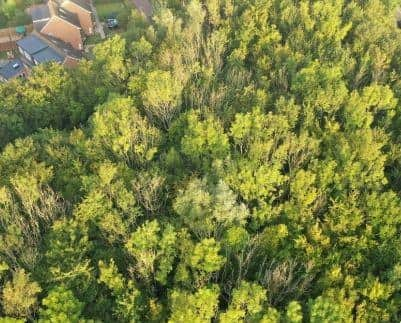Vital tree felling work to start soon at a Horsham nature reserve
and live on Freeview channel 276
Horsham District Council plans to begin felling at Warnham Local Nature Reserve’s Walnut Tree Plantation on January 3.
Experts estimate that the disease will kill up to 90 per cent of all ash trees in the UK over the next decade – and it is expected to have a significant impact in Horsham.
Advertisement
Hide AdAdvertisement
Hide AdA council spokesperson said: “There is currently no cure or method of control to prevent or protect against ash dieback which means trees that have succumbed to it must be felled.


"Some ash trees on Horsham District Council land have already been killed by the disease and have been felled in the past couple of years.”
Trees at Southwater Country Park, as well as at the Warnham reserve, have been affected.
The spokesperson said: “There are thousands of ash trees on Horsham District Council land, both within woodland and parks and open spaces. More and more of these trees are showing the symptoms of ash dieback and the council is working on a plan of action for the worst affected sites.
Advertisement
Hide AdAdvertisement
Hide Ad“We can only deal with trees on Horsham District Council-owned land. West Sussex County Council has a programme to deal with ash trees next to public roads.
"Private landowners who have ash trees on their own land must take responsibility for monitoring the condition of their trees.
“From this winter, and for the next few years, we will be removing diseased and dying ash from many of our sites, including Warnham Local Nature Reserve and Southwater Country Park … Some of our woods are between 30-50 per cent ash, so their removal will have a significant impact on the landscape, but this is unavoidable”
"We want to retain ash trees for as long as possible to see if they have natural resistance. However, once approximately 40 per cent or more of the canopy has been lost, the tree is succumbing to ash dieback and will need to be felled.
"In some cases it will be necessary to fell a small number of healthy trees as part of the overall process to allow access into a wood, or to ensure dangerous trees can be felled safely.”